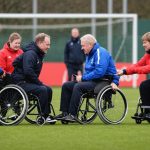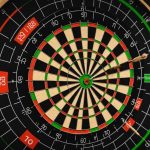Importance of Cooling Down After Competitive Swimming
Cooling down after competitive swimming is essential due to its significant physiological impacts. This gradual process aids in transitioning the body from a heightened state of activity to rest, preventing sudden changes in heart rate and blood flow.
Moreover, cooling down plays a pivotal role in mitigating muscle soreness. By promoting continuous blood circulation, it facilitates the removal of metabolic waste products like lactic acid, accumulated during intense swimming sessions. This process reduces delayed-onset muscle soreness (DOMS) and enhances overall muscle recovery.
Also to see : Top Recovery Techniques for Athletes Post-Competition: Rejuvenate and Excel!
Recovery techniques emphasize the benefits of cooling down for competitive swimmers by contributing to a quicker recovery time. Engaging in light swimming or stretching as part of a cool-down routine helps restore normal breathing and heart rates faster. Additionally, expert opinions and studies highlight the effectiveness of cooling down. Swimmers who consistently incorporate it into their training regimen show improved performance in subsequent sessions due to reduced soreness and fatigue.
Implementing these recovery techniques post-swim can aid athletes in maintaining optimal performance levels long-term. Therefore, understanding and applying cooling down methods are vital for any competitive swimmer looking to enhance their recovery and minimize injury risks.
Also read : Enhancing Your Golf Game: Leveraging Sports Science for Precision in Shot Accuracy
Step-by-Step Cooling Down Strategies
Cooling down post-swim is vital for effective recovery and maintaining performance levels. Let’s explore some highly recommended strategies.
Active Recovery Techniques
Active recovery involves light swimming, enabling sustained movement to help muscles relax and recover efficiently. Integrating gentle exercises, such as light freestyle or backstroke, promotes blood circulation, which is crucial after an intense swim session. Gradual intensity reduction is key, preventing sudden cessation that might lead to soreness. For optimal results, aim for active recovery sessions lasting about 10 to 15 minutes—ample time for the body to transition from a state of exertion to relaxation.
Static Stretching Routines
Implementing static stretching routines post-swim helps elongate muscles and relieve tension. Focus on key stretches targeting major groups like shoulders, arms, and legs. Maintain each stretch for at least 20 to 30 seconds, as this duration effectively aids muscle flexibility. Frequency is essential, ideally incorporating stretches after every swim session. Avoid common mistakes such as bouncing while stretching, which can cause strain.
Hydration and Nutrition Post-Swim
Rehydration is imperative after swimming due to fluid loss. Consuming water or electrolyte beverages soon after a session aids in restoring lost fluids. Complement hydration with nutritional protocols like a snack rich in proteins and carbohydrates within 30 minutes of completion. This combination supports muscle repair and replenishes energy reserves, fortifying the recovery process.
Additional Recovery Practices
For athletes, implementing effective recovery strategies is crucial for optimal performance and minimising injury risks. Beyond the traditional cool-down, various sports recovery techniques can significantly enhance your routine.
Foam Rolling
Foam rolling is gaining popularity as a practical tool for muscle recovery. Particularly beneficial for swimmers, this technique involves gently massaging targeted muscles with a cylindrical foam roller. It helps reduce muscle tension, improve flexibility, and increase blood flow, enabling faster recovery and reducing muscle soreness. Notably, it can be an accessible addition to both amateur and professional athletes’ routines. Incorporating foam rolling consistently can support a more comfortable training and recovery process, making it a valuable technique.
Sleep and Rest
No discussion on muscle recovery is complete without mentioning the importance of sleep and rest. Adequate sleep is fundamental, as it is during this time that the body undergoes repair and regeneration of tissues. Rest days, essential for athletic recovery, prevent overtraining and enhance performance by allowing muscles to heal and adapt. By prioritising sleep and scheduling rest days, athletes can experience increased energy levels and improved focus during training sessions.
Incorporating these recovery strategies alongside traditional methods can enhance an athlete’s ability to recover effectively, optimise performance, and maintain long-term health.
Expert Insights and Recommendations
Exploring effective recovery practices in swimming can enhance performance and well-being. Let’s delve into what experts suggest regarding Coach Advice and Recovery Best Practices.
Testimonials from Coaches
Coaches emphasize unique recovery strategies tailored to individual needs. Common practices include cooling down techniques to aid swimmer recovery. Elite swimmers often use dynamic stretching and gradual de-escalation of activity post-training. For example, coaches suggest integrating light swimming drills to transition the body from intense workouts to rest. Real-life examples demonstrate how these practitioners customise routines, advising that a swimmer’s personalized routine is most effective when it incorporates flexibility exercises adaptable to their energy levels post-session.
Scientific Research Findings
Scientific studies underscore the importance of structured recovery methods. Research highlights that proper cooling down reduces muscle soreness and speeds up recovery times by enhancing circulation. Future trends in recovery methods indicate a growing focus on integrating technology, such as wearable devices, to monitor physiological responses during recovery. Emerging studies also point towards balance in physical and mental recovery, advocating mindfulness techniques alongside physical cooling down practices. This research-backed approach ensures that swimmers remain at peak performance, underlining the scientifically proven benefits of personalized, well-structured routines.
Visual Aids and Demonstrations
To enhance your swim recovery routine, visual guides can be tremendously helpful. One recommended resource is Swim Recovery Videos, which provide clear and practical demonstrations of proper cooling down techniques. These videos often incorporate various exercises and stretches, allowing swimmers to see the methods in action and understand the benefits more thoroughly.
Additionally, infographics can be an excellent tool, summarizing the key points of effective swim recovery practices concisely. They often highlight essential aspects such as hydration, nutrient intake, and specific stretches. These visuals make complex information more digestible, ensuring swimmers of all levels can implement the practices effectively.
For those seeking to deepen their understanding of swim recovery, external studies or articles offer valuable insights and evidence-based recommendations. By exploring such resources, swimmers can compare findings from different studies and refine their recovery protocols accordingly. Even without direct links here, you can easily find numerous online articles and papers by searching for “swim recovery techniques.”
Incorporating visual resources into your routine not only simplifies the learning process but also boosts your confidence in performing recovery techniques correctly, ultimately leading to enhanced performance and well-being.











